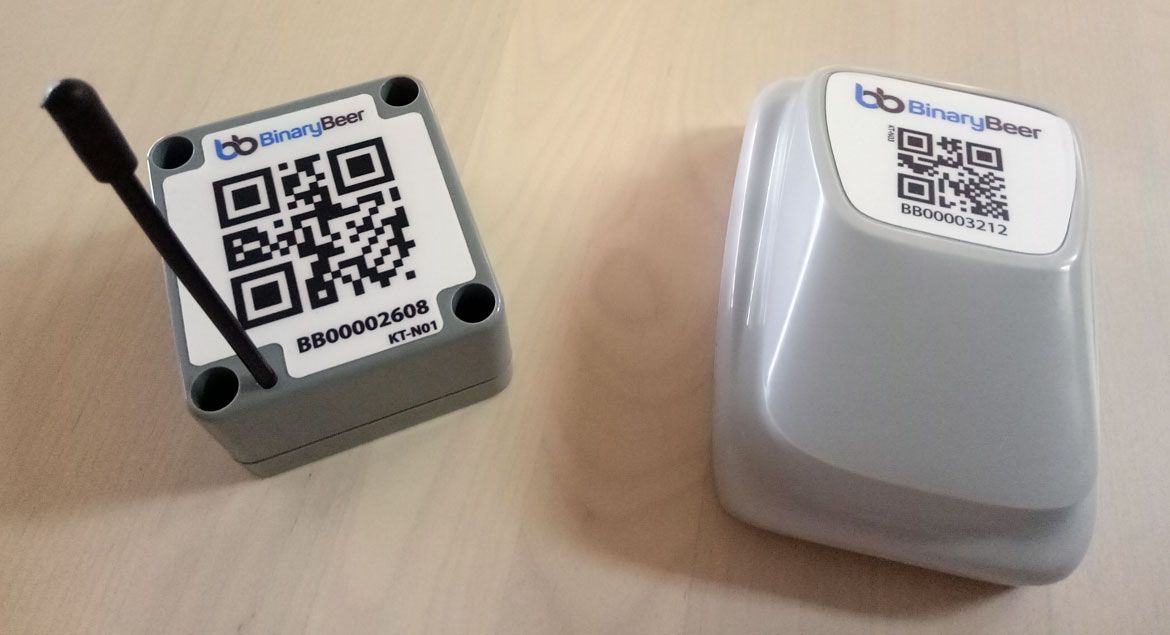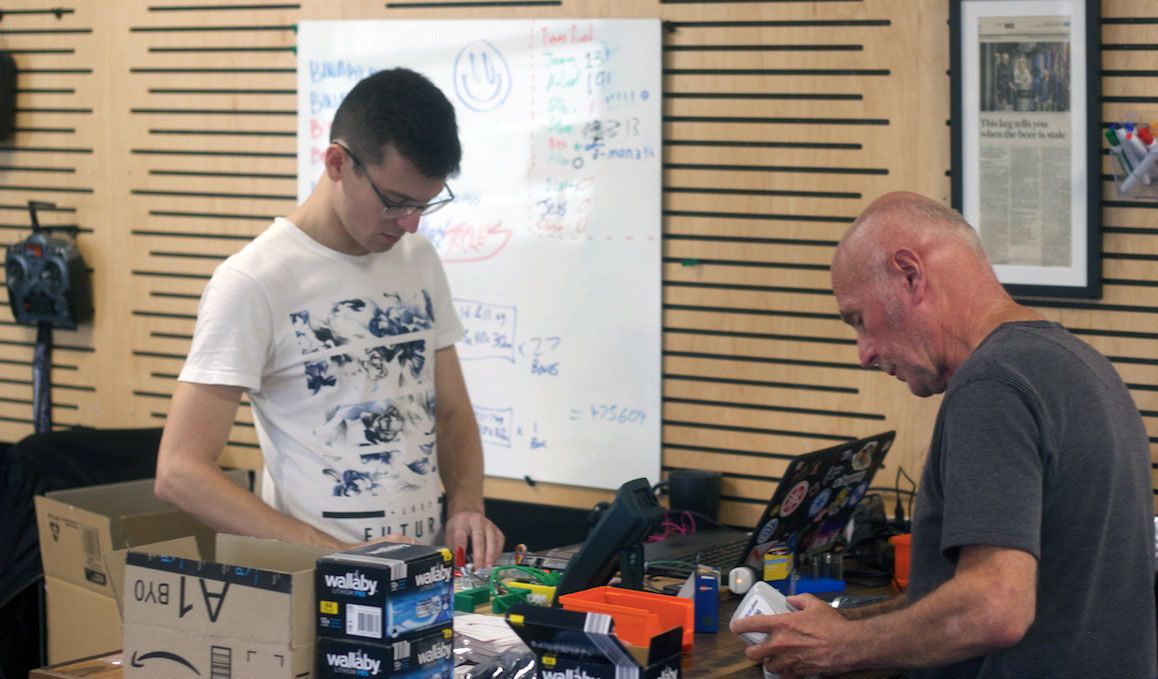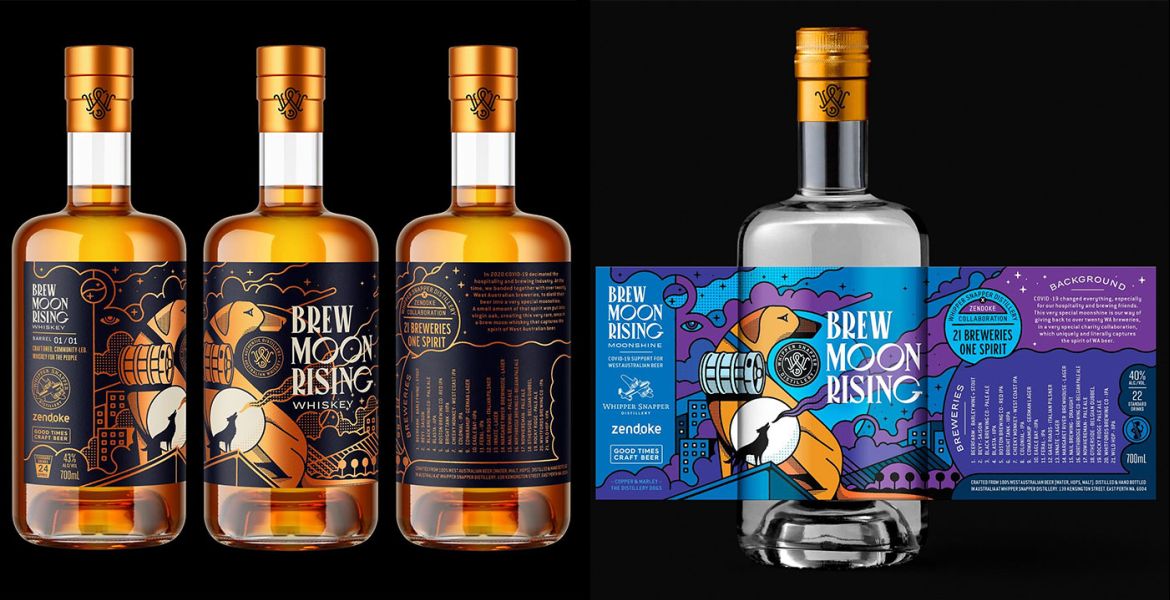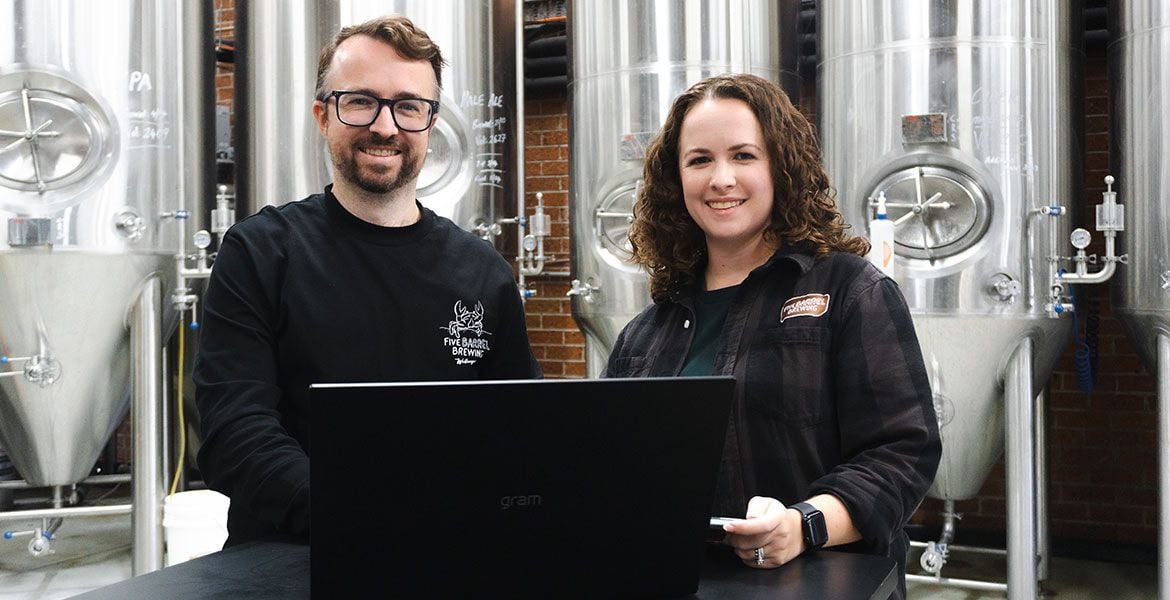Two years ago, we reported on the efforts of a homebrewer and a team at the University of Wollongong to develop a keg-tracking device. As orders start to come in, Glen Humphries chatted to Scott Morgan, the brewer who has joined the Binary Beer team to find out more.
Having fermenters full of beer but no kegs to put it in is not an enjoyable experience. It’s something Scott Morgan, a former brewer with Rocks Brewing Company, knows all too well.
“I’ve been on the brewery floor where there are no kegs in the warehouse and 120 kegs worth of beer in the tank – it’s not nice,” he says.
“You’re sitting there wondering where all your kegs are.”
It’s not just craft breweries – Scott says the big guys lose track of their kegs all the time too.
“A big brewer we’ve spoken to, every Saturday and Sunday morning during summer they’ve got drivers out trying to collect kegs,” he says.
“They’re burning money on wages and they’re burning fuel just driving around looking for kegs. They spend that time and money driving around because they know on Monday they wouldn’t have enough to rack in.”
The kegs could be anywhere – connected to a bar’s tap, in their coolroom, sitting out in an alley behind the bar, dumped in some random location or even swiped by some homebrewer for their own use.
For ages, breweries had no idea exactly where the hell those expensive silver containers were. But a little invention from a Wollongong company called Binary Beer is looking to change that.
Computer science and engineering whiz Michael Burton came up with a device that attaches to the top of the keg, allowing it to be tracked – telling the brewery exactly where it is.

Scott, who met Michael through a Wollongong homebrewers club, saw the value in the idea and eventually signed on as commercial manager.
The earlier prototype sent real-time information on its location and temperature via the LoRaWAN network. Since then, the technology has improved so much that the new device transmits over the Vodafone mobile network via a SIM card, and has a five-year battery life.
And it works a treat too, says Scott. He's been carrying a test unit around to monitor its effectiveness. He can call up the data and show the list of addresses – including his own – where the keg has been, and the temperature at which it has been stored.
So, rather than driving down streets looking out the window for missing kegs, the Binary Beer device lets you go straight to it.
“If you can get your kegs back quicker, it’s a good relationship with the customer [because they can be supplied with a full keg faster] but it’s also good for your internals,” he says.
“You’ve got your kegs back and you can fill them rather than running around wondering where the bloody hell they are.”
The device sits in a bracket on top of the keg and refinements have ensured it doesn’t get in the way when bar staff want to tap it, as well as ensuring it can take a licking and still keep transmitting.
“The boys, being engineers, have done the engineering ‘trying to break stuff’ rule,” Scott says.
“So they were throwing kegs on top of each other, trying to strike it and break the body. They’ve thrown it all around the place, they’ve soaked it in water and then checked it for ingress of dirt or water.
“We had it sealed in a bath for three weeks and it kept transmitting.”

While skeptics may point out that someone with an angle grinder and theft on their minds can just remove the tracker and chuck it, he points out the device will have been sending out its location all the while so the owner will still have a record of the address the keg was at when it was attacked.
At some stage, the team want to include the ability to detect just how full a keg is but, at this stage, that chews up too much battery life to be practical. However, Scott points out the temperature monitoring can be a good guide as to when the customer needs fresh beer.
“If it’s a hot day and the temperate from the device is 25, 35 then 25 degrees and then it goes to four you know you’re in the cool room,” he says.
“A few days later if it spits out that it’s 35 degrees again, then that’s an indication to go and pick up the keg.”
A big brewer has already ordered a stack of the devices and there is interest from overseas breweries as well, although what telcos will charge for data roaming on these devices is yet to be figured out.
But it’s not just for brewers – the device could work for anything a business loses and would like back.
“There are a whole heap of other uses for this device,” Scott says.
“We’ve had interest from a number of industries – even shopping trolleys. They cost between $850 to $1200 a pop and the loss rate is $20 million, that’s what the industry spends on new shopping trolleys.”
You can find other entries in The Collaborators series here.

















